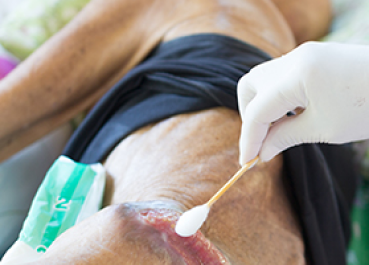When you entrust your loved one to the care of a hospital or nursing home, you rightfully expect that the staff will do all in its power to ensure his or her comfort. The last thing that you may expect is your loved one developing pressure ulcers or bedsores because the staff did not regularly change his or her position in the bed or wheelchair. Despite being easily preventable, bedsores are still a cause for concern in hospitals and nursing homes nationwide.Unfortunately, New York is not immune to the problem. In a recent example, a state Supreme Court jury in Buffalo awarded a widow $1 million, because her husband developed bedsores while staying in an area hospital. Although the husband was only in the hospital for one month, he developed bedsores because the hospital failed to regularly turn and reposition him. As a result, a severe bedsore extending to his tailbone developed. By the time the bedsore was discovered, it was too late. Even with surgery, the wound never healed, eventually causing his death.Bedsores Can Be Life Threatening
Bedsores are lesions that develop because there is long and sustained pressure on the skin (most commonly the buttocks, hips, heels, tailbone and ankles) from an outside surface, such as a bed or wheelchair. Over time, the pressure prevents blood from flowing to the tissues underneath the pressure points. Once deprived of blood, the skin and underlying tissues eventually die.
Eventually, the dead skin and tissues peel away and leave an open wound. If the wound is not treated promptly, it can deepen, eventually exposing the bones underneath, as in the Buffalo case. Without surgery and regular aggressive treatment, the wound can become gangrenous and cause sepsis, which is often fatal.
According to a 2012 study by the UCLA School of Nursing, bedsores can severely complicate patient recovery. It found that patients who developed bedsores during their hospital stay were more likely to require longer hospitalization, die during their hospital stay or be readmitted within 30 days of their discharge.
Consult An Attorney
Bedsores are easily prevented, assuming the institution’s staff ensures regular rotation of the patient’s position. Additionally, if caught early, there is a good chance they can be successfully treated. Despite these facts, many hospitals and nursing homes fail to adequately guard against the development of bedsores and fail to detect them in the early stages. As a result, the presence of bedsores often is strong evidence of negligent medical treatment on the part of the nursing home or hospital staff.
If a loved one has developed bedsores during his or her stay in a hospital or nursing home, compensation may be available under New York law. An experienced medical malpractice attorney can advise you on your right to recover damages and work to hold the responsible parties accountable for their neglect.





